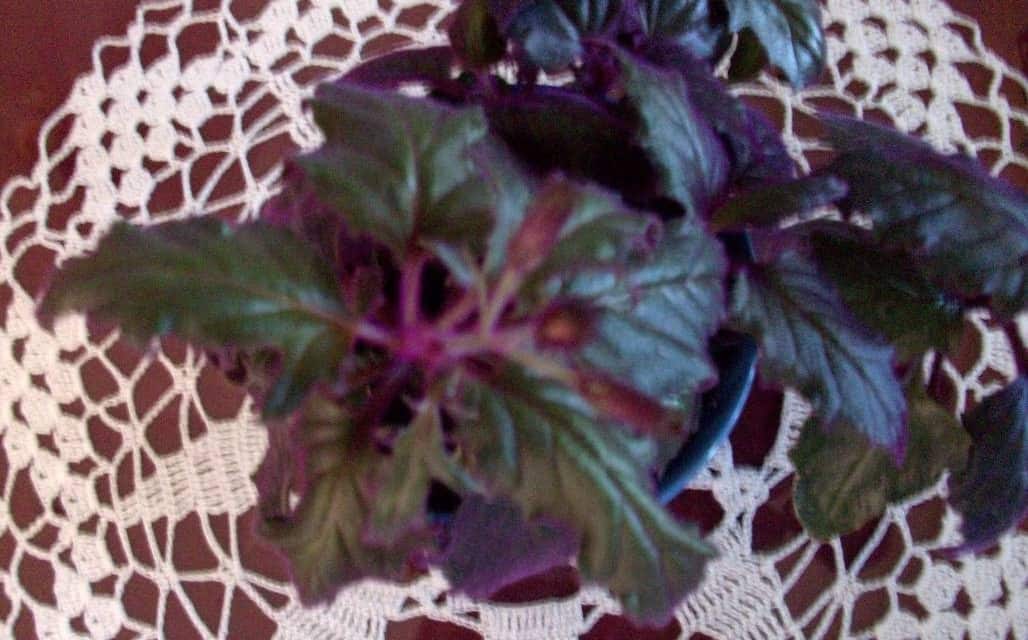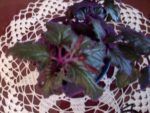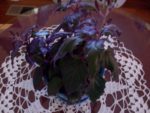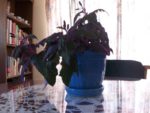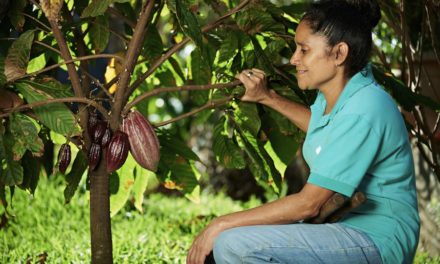By Lorraine Shoemaker
There are many wonderful houseplants, but there is one that’s sure to make almost anyone passionate about houseplants. The regal ‘Purple Passion Plant’ is both striking in appearance and quite easy to grow – making it a favorite of plant lovers. With leaves and stems that are a deep green and covered with tiny soft purple hairs, this plant seems to be made of rich purple velvet!
The flowers of the Passion Plant are both interesting and quite unexpected. They are small bright orange flowers in little clusters. When the flowers bloom, they produce a faint unpleasant odor that has been compared to stinking feet, rotting meat or dog doo- yuk! Pinch these flowers off as soon as the buds appear, as new plants are not propagated by seed.
To propagate a new plant, select a vine and pinch it off ¼ inch below the second or third node from the end. The cutting may either be planted directly into the soil or put in a glass in the window sill, until roots are about an inch long. The latter is the way I have found to be best. Before planting the rooted cutting, dip the roots (careful not to dip the stem) in rooting hormone and it will quickly produce a strong, healthy, lush plant. Propagating new plants occasionally is necessary because as the plant ages, the older leaves lose their vigor and the color fades. When the old plant fades, simply replace it with fresh new vigorous starts.
Caring for these beautiful plants is also very easy, they require only an all purpose potting soil. As the Purple Passion Plant likes a slightly acidic soil, you can also mix peat moss into the soil. A typical houseplant fertilizer is sufficient (although a fellow gardener friend swears by African Violet fertilizer). For the best show of color, this plant requires a lot of bright indirect light. Keep the soil slightly damp. Avoid over watering, as this will rot the roots and may kill the plant. It’s better to let it become slightly dry between waterings than to over water. The Purple Passion Plant is excellent in shaded hanging baskets, as well as for houseplants. In warmer climates they can be grown outside for a stunning accent to any garden.

